
How many times have you sat in the clubhouse with a post-round drink and heard one of your playing partners mutter something along the lines of: “If I could just get the ball in play off the tee, I’d be a single-figure player.” Those sorts of comments are made the world over, for one simple reason: the majority of amateur players hit at least one wayward drive a round that leave them hacking out of a bush, dropping behind a hazard or reloading off the tee. Surely if we could just find the short grass, even at the expense of distance, we’d all shoot better scores?
That was the hypothesis we were keen to put to the test at West Hill Golf Club in early November. The idea was to play a round as normal in the morning, then start every par 4 and par 5 from the middle of the fairway in the afternoon. However, the start distance would be bespoke to each player, with our four-ball comprising myself (9.6), Neil Tappin (3.9), David Taylor (18) and Alison Root (16) – four players from across the handicap spectrum.
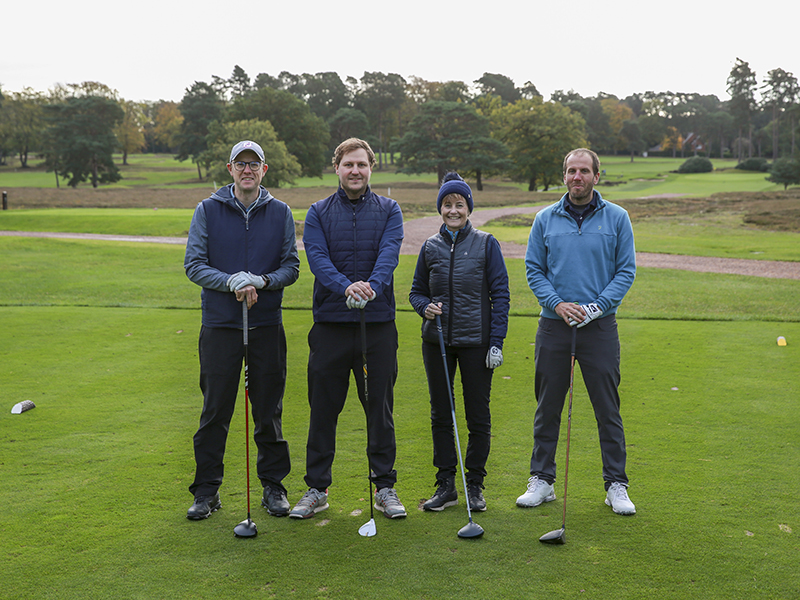
In the afternoon, with the help of game-tracking software Arccos, we worked out our average driving distance and took 25 per cent off that figure, which roughly equates to how far we’d generally hit our ‘fairway finding’ club. We didn’t want to start at 3-wood length as Arccos stats show you’re less than one per cent more likely to find the fairway with 3-wood as opposed to driver. Neil, who averages 286 yards off the tee, started each hole at 214 yards in the middle of the fairway; I began at 189 yards from an average of 252; David started at 175 yards (233 average); and Alison began at 143 yards (190 average).
Once we’d worked all that out, the experiment commenced from the white and red tees. The weather was crisp yet sunny and West Hill was in great condition despite the recent heavy rain. As we contemplated our opening tee shots, thoughts turned to the challenge ahead. I felt, given the length of the course (6,309 yards), that distance would be more beneficial than accuracy. I expected better scoring in the morning on average, even with the odd lost ball built in, and was certain that Alison – who is known for her straight hitting off the tee – would be at least a couple of shots better in round one. The others weren’t so sure.
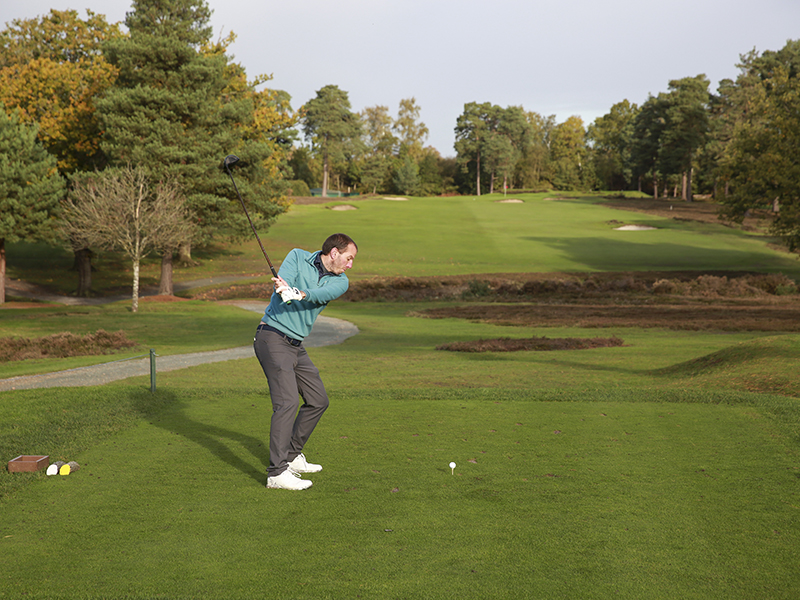
First Round
Aptly, myself and Neil deposited our first drives into the heather, and David and Alison found the stream bisecting the 1st fairway with their second shots. But things improved after that and we all settled into a rhythm more or less akin to how we’d expect to play. There’s no doubt length is beneficial off West Hill’s white tees, but the wet rough and abundant heather also placed a premium on playing from the short grass. Myself and Alison both made double-bogeys on the relatively short 2nd after finding heather off the tee, while Neil and David made safe pars from the short grass.
However, it’s important to recognise that finding the fairway off the tee is by no means a guarantee of full-hole success, especially on the 469-yard 3rd (415 yards from the red tees). David and Alison made double and triple respectively from the middle of the fairway, the former finding a ditch some 50 yards in front of the green with his second.
After nine holes, Alison, myself and Neil were multiple shots worse than handicap, while David was level – perhaps not surprising given he hit 66 per cent of the fairways. Myself and Neil, on the other hand, were struggling off the tee, with a combined four fairways hit. I’m convinced that my front-nine 43 would have been 40 or better had I found the short grass a couple more times.
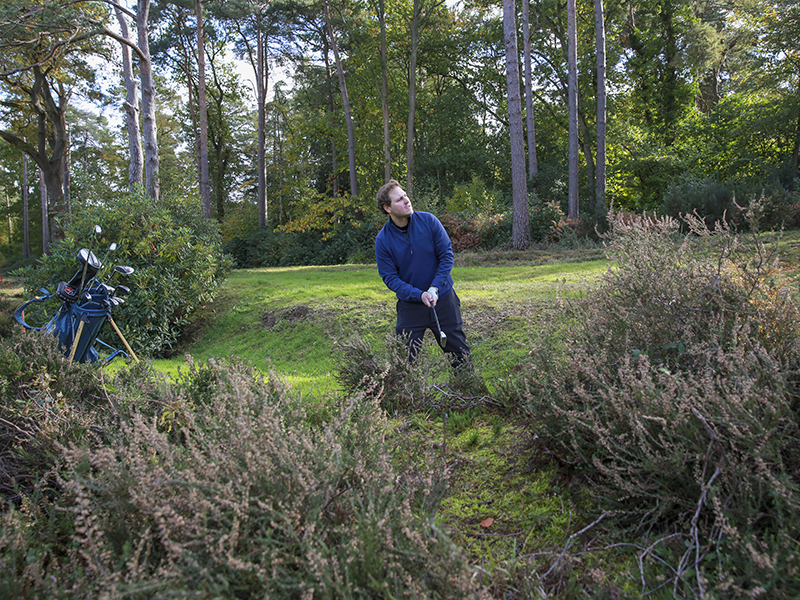
It was a similar story for me on the back nine, with my driver continuing to misbehave. I hit one fairway to come back in 44 and shoot an overall 87 – seven shots worse than my handicap. Alison matched her front-nine 51 on the back side to record a 102, despite hitting the majority of fairways. That said, West Hill is 5,593 yards off the red tees – a long course when combined with next to no roll and wet conditions. David continued to drive the ball well and returned an 86 for a 37-point outing, while Neil played the last seven holes in level-par – thanks, in part, to improved driving – to post a 78.
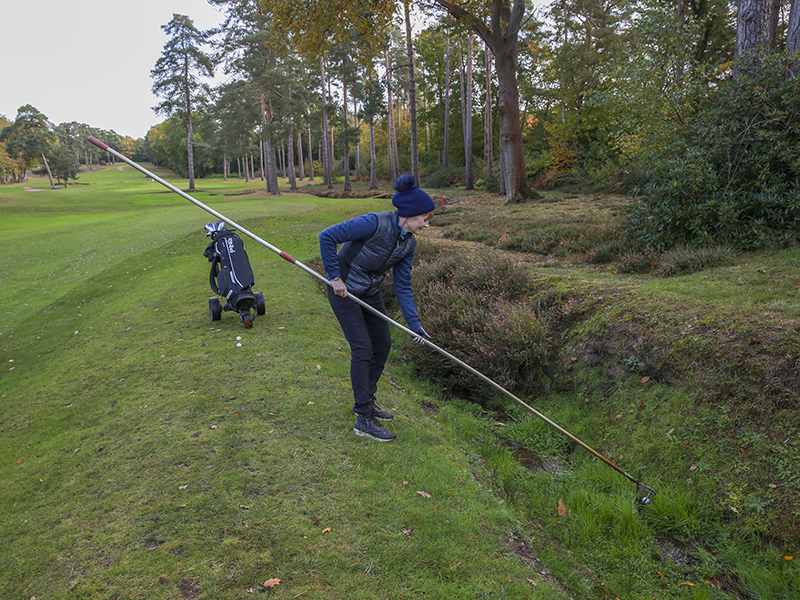
Second Round
After a quick lunch, we were into round two. With the threat of darkness making 18 holes unlikely, we decided to skip the par 3s and replicate our morning scores as the short holes didn’t have any bearing on the experiment. Using Arccos’ hole maps and live GPS distances, we were able to position ourselves at the correct yardage in the middle of the fairway.
Relieved at not having to play my second from heather on the 1st hole, I pulled my 5-iron and watched it sail towards a bush I’d never been anywhere near before. It came up short, but it was an early and timely message that amateur golfers are very capable of finding trouble from the middle of the fairway. On the 3rd hole, Neil pulled his approach onto the railway line en route to a double-bogey, while Alison got tangled up in the heather on her way to a triple-bogey at the 6th.
As we walked off the 6th green, the heavens opened and a biblical deluge poured down on West Hill. Thankfully, it only lasted three holes, but it made the closing part of the front nine very tricky indeed. After the front side, I was one shot better than the morning round; David was two better; Neil was on the same score; and Alison was one stroke worse off – a good effort given how much longer the course was playing for her in the afternoon.
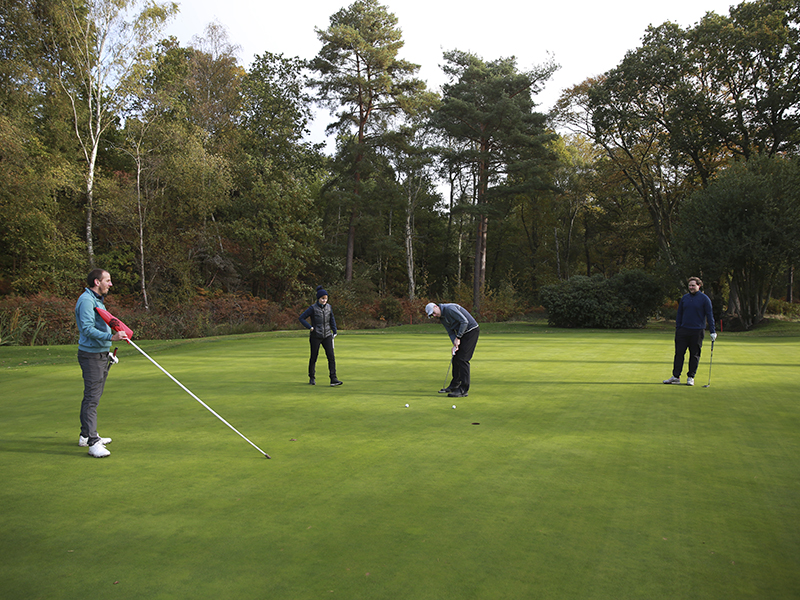
Of course, the layout was longer for everyone. Of the 11 par 4s, nine of them play over 380 yards from the whites and four of them are longer than 415 yards, while only one is less than 370 yards. That meant myself, Neil and David were constantly standing over second shots with woods or hybrids in our hands, which brings a certain degree of risk. Yes, we always had perfect lies in the middle of the fairway, but it’s not easy consistently playing approaches from 200+ yards, especially when you factor in weather conditions, light conditions and fatigue from walking 36 holes in one day on a hilly course.
So, how did we score over our second 18 holes? Remarkably, both Alison and David negotiated the layout in the same number of strokes as the morning round. Neil was one shot better and I was five strokes to the good. Even with harder weather conditions and fatigue, no one scored worse than the morning. But what conclusions did we draw?
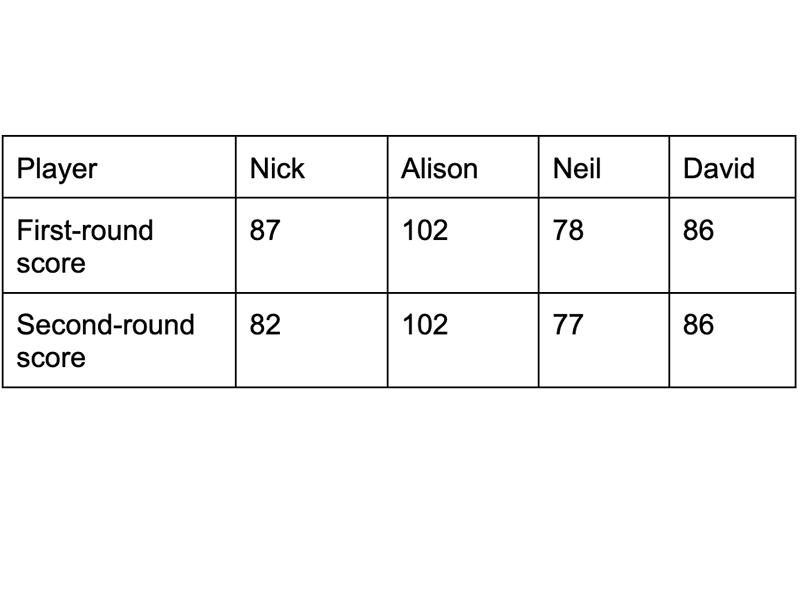
The Verdict
Neil Tappin
It was a very interesting experiment that left me surprised my scores were so similar. In truth, on another day, my morning round could easily have been in the mid-80s. I drove it very poorly but largely got away with it (because the heather wasn’t too thick on the day). Having said that, the best stint of golf I played on that day was the last eight holes of round one. When playing my best, I’d certainly want the advantage of my full driving game.
Whilst I felt I was lucky to shoot 78 in the morning, I should have been slightly lower than 77 in the afternoon. I was sloppy on the greens (-5 strokes gained putting in the afternoon vs -0.2 in the morning). One other interesting finding was that despite driving it poorly in the morning, my only lost ball was in the afternoon – a 3-wood into the 3rd. On a tree-lined course, hitting approach shots from a long way out makes this a real possibility!
All in all, my feeling was the margin between my best and worst scores would be drastically reduced if I adopted a shorter, straighter strategy. When not hitting it my best, I’d definitely benefit from a more conservative strategy… that is, if I could hit every fairway at 214 yards – which is another question altogether!
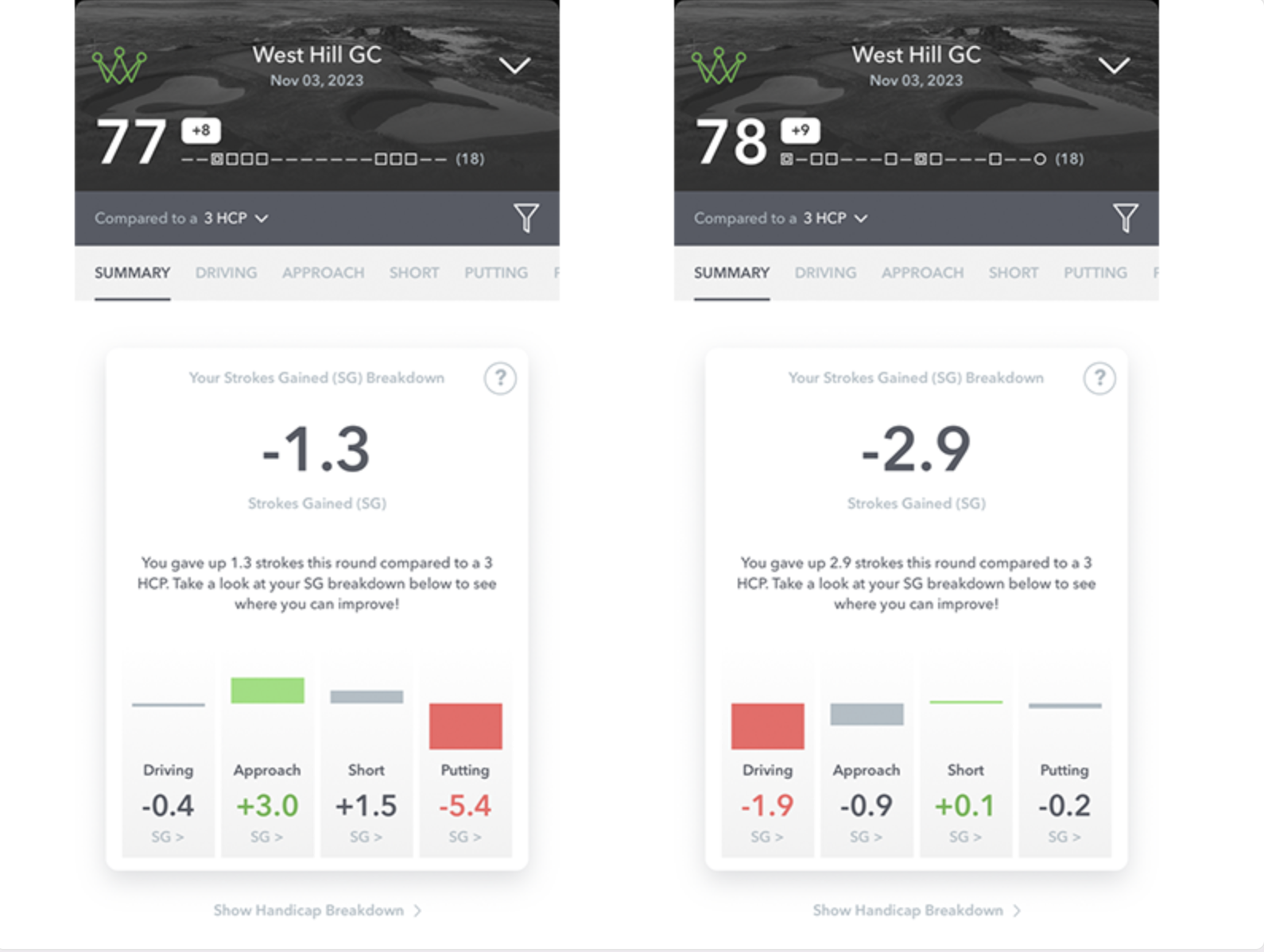
Nick Bonfield
The reality is that while you can lose balls from the fairway, you’re far more likely to find yourself reaching for a fresh Pro V1 from the tee. If you’re gaining more strokes than a tour player when it comes to driving accuracy, you’re never going to be in bad shape, regardless of distance. Often, golfers can fall into the mindset that you can’t make par if you don’t hit a green in regulation and take needless risks because of it. That’s absolutely not the case.
One of the motivations for hitting driver all the time is the perceived benefit in terms of making birdies, but according to the Arccos data, 10-handicappers make 0.8 birdies per round. Is it really something worth chasing if your driver can be temperamental? The answer to that question will largely depend on your motivations. If you tend to head out with friends in casual games, by all means pull driver every par 4/par 5 and give it a whack – you’ll probably have more fun, you will give yourself more short-iron approaches and you might just shoot your best round ever if you get on a roll. But if you compete in a lot of medals, I’d urge you to consider putting the ball in play off the tee at all costs.
David Taylor
On the face of it, you’d think two rounds of 86 wouldn’t actually be that enlightening. However, now the dust has settled and I’ve looked at the Arccos data, there are definitely some interesting conclusions. I felt I drove it well in round one, but the stats say I only hit five of the 13 fairways and this led to three double-bogeys. I found the heather on five occasions, which led to a hack out each time.
In round two, I ended up hitting a lot of second shots with my 7-wood, none of which got me into any trouble, so much so I only doubled one of the 13 holes, with two pars and ten bogeys. I came off the course feeling I’d played worse because I hadn’t really been able to attack many greens, but my scoring was much steadier. When I play, I love to get the driver out and try and make pars and even the occasional birdie. That’s where the fun comes for me and so this more conservative approach didn’t feel right, although the benefits are quite clear.
Where I do feel this experiment paid the most dividends was on the par 5s. I found the heather on both in round 1 and ended up with a bogey and a double, but in round 2 I found both greens in regulation and it seemed really straightforward. It feels counter-intuitive to put the driver away on the longer holes, but it may well reap rewards.
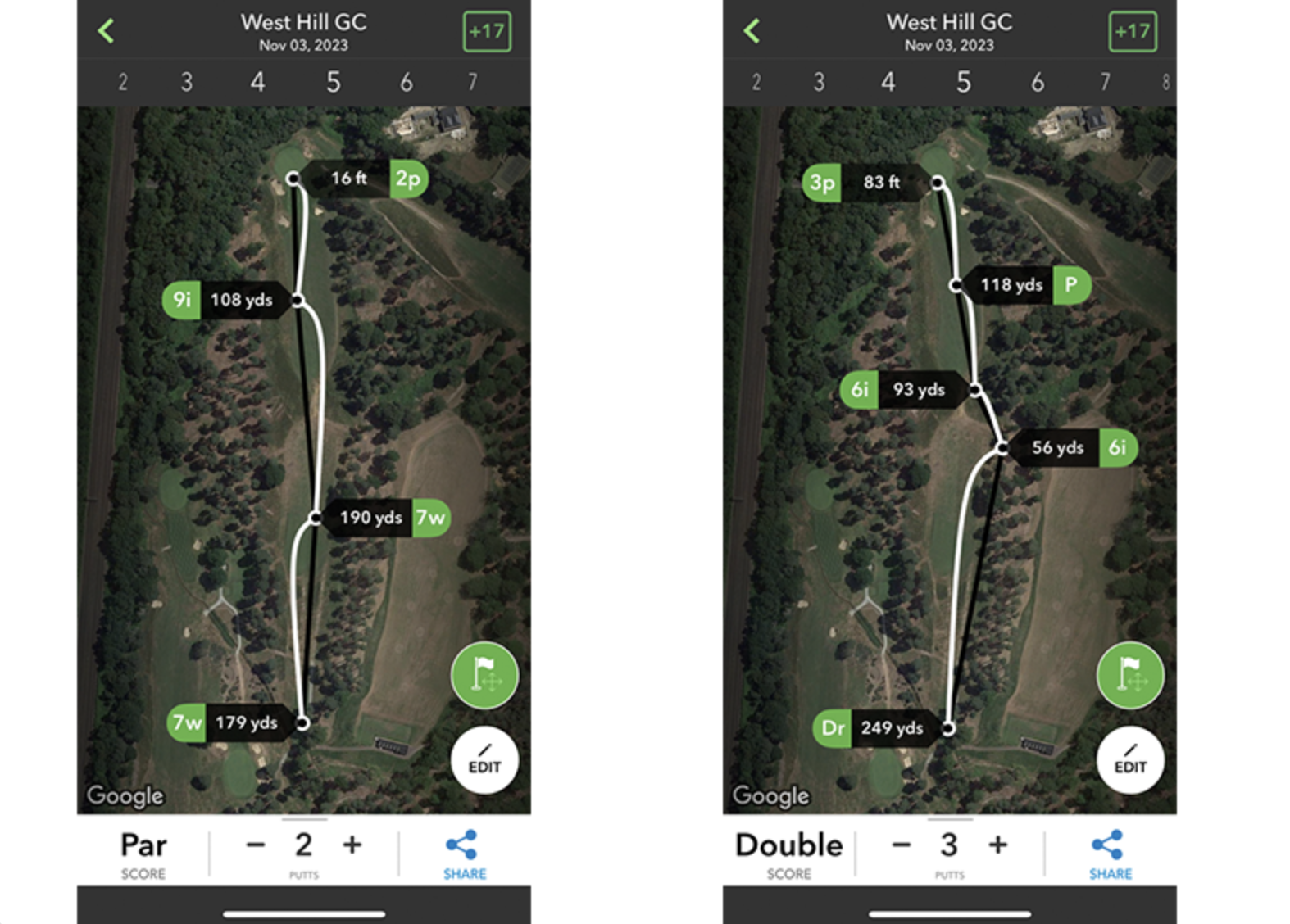
Alison Root
I’m usually very straight off the tee, so finding fairways is not a problem. This was generally the case at West Hill, although I did find heather on a couple of occasions, as there were a few long carries. The problem was the rest of my game, particularly in the morning, including too many three-putts that contributed to my score mounting up.
Driving is definitely the best part of my game and as I’m highly unlikely to spray the ball into the trees anyway, I obviously felt disadvantaged in the second round, placing my ball just 142 yards down the fairway. This made several holes feel significantly longer, especially with so many hazards to avoid. However, knowing the course better, I played certain holes, like the par-4 11th, which is stroke index 1 off the red tees, with far more accuracy, making par instead of a quadruple-bogey!
Like most women off a similar handicap, who generally tend to hit the ball straight off the tee, I don’t need to put my driver away, but this proved that I must work on all other areas for greater consistency to improve my scores.







